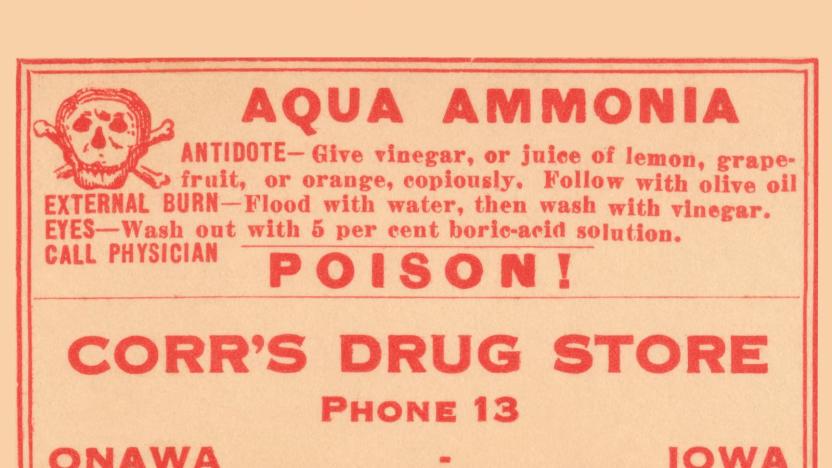ammonia
Latest

Researchers discover a better way to make ammonia
For the past century or so, we've been making ammonia the same way that Nobel-prize winning chemist Fritz Haber did: by smashing hydrogen and nitrogen gas together at 250 atmospheres and heating them to nearly 1000 degrees F. But a new method developed at the University of Utah turns that process on its head.

Research breakthrough could make hydrogen gas an even better green fuel
Toyota might be bringing a commercial hydrogen fuel cell car to roads in 2015, but the fuel still has a few drawbacks -- the major ones being storing and transporting the gas itself. Research from the UK's Science and Technology Facilities Council (STFC) reckons they can solve it using ammonia, which is more secure and less volatile, as the hydrogen delivery method. "Cracking" ammonia offers up one part nitrogen and three parts hydrogen and while the catalysts that do this are typically pricey precious metals, this new research uses two chemical processes at the same time, offering the same results at a much lower cost. According to the research team leader, Professor Bill David: "Our approach is as effective as the best current catalysts but the active material, sodium amide, costs pennies to produce. We can produce hydrogen from ammonia 'on demand' effectively and affordably."

Watch Live: ISS emergency spacewalk to fix ammonia leak (Update)
Yesterday NASA reported that an ammonia leak had been discovered on the ISS. Astronauts Tom Marshburn and Chris Cassidy are embarking on an emergency spacewalk to fix the problem. NASA TV is broadcasting the walk live, and you can follow along on the somewhat safer journey past the break. Update (3:54PM ET): Nasa has reported within the last or so that the faulty pump has been successfully replaced. The entire spacewalk took about six and half hours to complete, according to NASA's Twitter.

NASA reports ammonia leak on ISS, says inhabitants 'in no danger'
The International Space Station has been a font of good news and scientific progress since it received its first human residents at the start of the millennium, but now it may be starting to show its age. The current crew reported seeing damage to the vessel's truss structure yesterday and NASA has since confirmed there's been a leak of ammonia from the station's cooling system. The Agency says the problem isn't dangerous and that regular ISS-style activities are continuing as normal while earth-bound helpers figure out a way of re-routing power channels before part of the cooling system shuts down. If you want to hear what unflustered voices sound like at an altitude of over 200 miles, check out the audio of Commander Hadfield's initial report of the leak at the source link below. Update: Commander Hadfield has also confirmed on Twitter that there's been a "big change in plans," and that astronauts Chris Cassidy and Tom Marshburn will perform a spacewalk today to fix the leak.

Researchers use inkjet acumen to create wireless explosive sensor from paper
Meet Krishna Naishadham and Xiaojuan (Judy) Song. They're researchers at the Georgia Institute of Technology, and those little devices they're holding may one day save you from an explosive device. This petite prototype is actually a paper-like wireless sensor that was printed using basic inkjet technology, developed by professor Manos Tentzeris. Its integrated lightweight antenna allows the sensor to link up with communication devices, while its functionalized carbon nanotubes enable it to pick up on even the slightest traces of ammonia -- an ingredient common to most IEDs. According to Tentzeris, the trick to such inkjet printing lies in the development of "inks" that can be deposited at relatively low temperatures. These inks, laced with silver nanoparticles, can then be uniformly distributed across paper-based components using a process called sonication. The result is a low-cost component that can adhere to just about any surface. The wireless sensor, meanwhile, requires comparatively low amounts of power, and could allow users to detect bombs from a safe distance. Naishadham says his team's device is geared toward military officials, humanitarian workers or any other bomb sniffers in hazardous situations, though there's no word yet on when it could enter the market. To find out more, careen past the break for the full PR.




